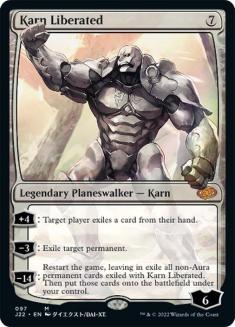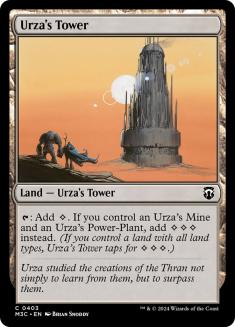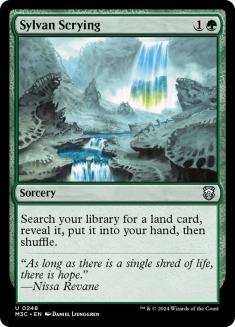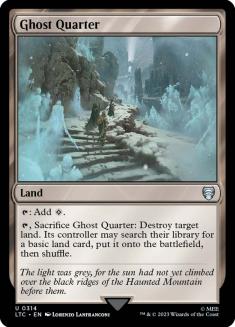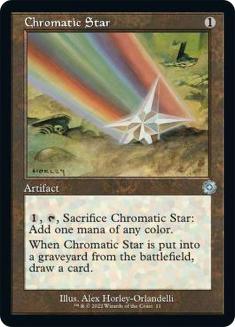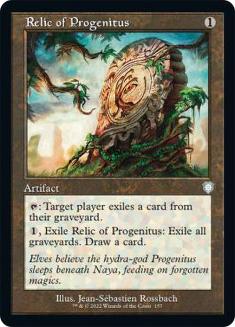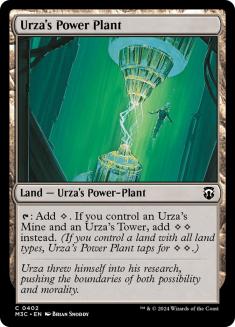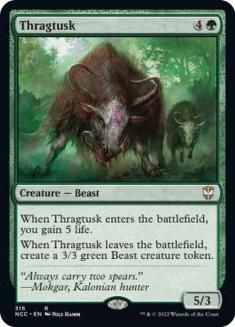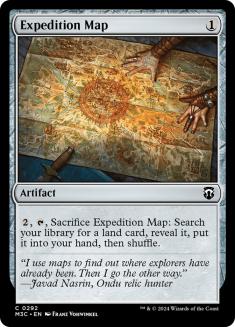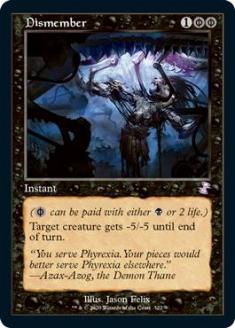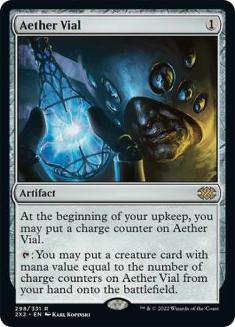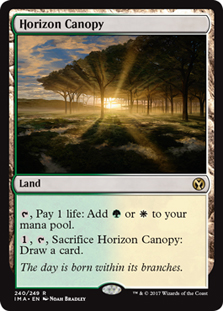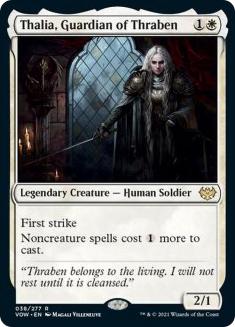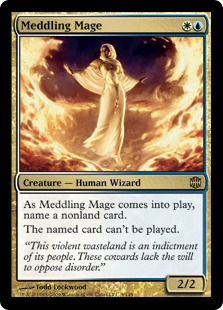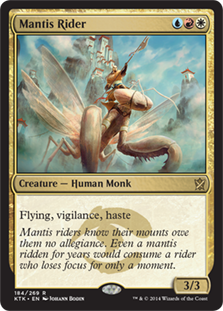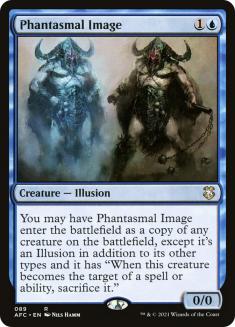Making mulligan decisions of the course of a Magic tournament is a repeated challenge of weighing the pros and cons of a given set of cards before choosing to either keep it or send it back for a fresh look at the cost of one card. The contexts in which these decisions are made vary to a fairly large degree:
- What is the matchup I am playing?
- Am I on the play or the draw?
- What happens to my hand if the best card in it is removed (via a discard spell like Thoughtseize or Inquisition of Kozilek, or otherwise)?
- Alternatively, what is this hand’s turn sequence if left fairly unimpeded for the first few turns?
- Am I playing a deck that requires on a critical mass of cards, as opposed to specific cards?
This list of examples could go on and on for quite a while and even be expanded upon in each case. The first question above concerning what the matchup is doesn’t apply in Game 1s of matches unless you’ve done a little bit of scouting, which means that the range of hands you are willing to keep will be wider. This is typically because you don’t know exactly what cards to look for in the matchup and you generally want to enact your deck’s most linear and proactive game plan, as your opponent is less equipped to handle it than they will in the sideboarded games.
As the Mythic Championship in London approaches, and along with it the new London Mulligan rule being tested at the event, the topic of deckbuilding and mulliganing has been closely tied to this new change. Modern as a format has been historically dominated by decks that are built are a fast, proactive, resilient gameplan that still has the might to withstand hateful sideboard options that other decks in the format bring to the table. Many of these decks typically are looking for very specific cards or starts to games and are able to “catch up” by simply executing their gameplan to defeat their opponent before they are able to stabilize or outrace you.
The source of the quote escapes me, and a part of me wants to say it came from an article written by Ari Lax, but the phrase “gain card advantage by killing your opponent while they still have cards in hand” is something I think about often when playing a deck capable of producing a fast clock and overpowering my opponent. Humans is a good example of this, as you are a deck with a slew of one-drops that are very powerful on exactly the first turn of the game and then dramatically lose their power with each passing turn. As such, it is rare to keep a hand that doesn’t possess a Champion of the Parish, Noble Hierarch, or Aether Vial.
The idea for this article spawned in my head after spending an evening playing Tron, specifically to practice mulligan discipline. My teammate on Team BCW and Tron aficionado Tannon Grace is one of my favorite people to watch play this deck, as he aggressively mulligans with the deck to the point where I’ve seen him mulligan below five cards very frequently and still wins anyway. I attempted to emulate that same level of aggressiveness in my mulligans and found myself also winning plenty of games with very few initial cards to work with. A single game of Magic consists of micromanaging many different resources. When it comes to mulliganing, the resource that we concern ourselves with when deciding to keep a hand or mulligan it is raw card count. Tron’s ability to generate an enormous mana advantage (another resource!) off just three specific lands means that Tron is in the market for quality over quantity.
Now that I’ve babbled about theory for half an article, let’s have some fun with some brainteasers. I’ll be providing examples of mulligan decisions for a few different Modern decks and elaborate on keep-or-mulligan decisions. Best of all, you’ll get to vote and agree or disagree!
Mono-Green Tron
Creatures (9)
Planeswalkers (6)
Lands (19)
Spells (26)
- 3 Oblivion Stone
- 4 Sylvan Scrying
- 4 Chromatic Sphere
- 4 Chromatic Star
- 3 Relic of Progenitus
- 4 Expedition Map
- 4 Ancient Stirrings
Sideboard

Scenario 1: You are on the play, Game 1, against an unknown opponent.
Hand:
I would mulligan this hand. The promise of assembling Tron by Turn 4 is possible, but poor. The Turn 1 play of Relic of Progenitus, while having a potentially high upside in many matchups, also has the potential to be a card we cycle for no real value and a ton of wasted time.
The nail in the coffin is that the payoff in question is Karn Liberated, which, as silly as it sounds, is a much worse Turn 4 play than a Turn 3 one. Something like Ugin, the Spirit Dragon would be slightly more enticing, as it is much more capable at catching you up on the battlefield assuming you are playing against a deck committing nonland permanents. In the blind, you want to favor hands that are proactive and allow you to start causing mayhem with Wurmcoil Engine, Walking Ballista, Karn or Oblivion Stone on Turn 3, and the odds of doing so are still quite reasonable with a mulligan.
Scenario 2: Game 3, on the play, against Izzet Phoenix.
Hand:
I would keep. Now that there is additional context to the decision, we can make an educated guess on how a hand like this would play out against Izzet Phoenix. I know that I spent a good chunk of time above talking about Tron’s interest in mulliganing aggressively to assemble Tron as quickly as possible, but the added interaction and guarantee of assembling Turn 4 Tron give this hand a solid chance of getting there.
One of the quickest ways for Tron to lose against Izzet Phoenix is to get barreled over by Awoken Horror and take a ton of damage before stopping their onslaught, only to be burned out by Lightning Bolts and a backup army of Arclight Phoenixes. Dismember and Relic of Progenitus team up here to tackle those problems with relative ease, all while allowing you to develop your land drops via Expedition Map and Sylvan Scrying. Thragtusk is one of your best threats in the matchup, especially because there is a nonzero chance your Tron lands are turned into Mountains via Blood Moon, in which case you’ll need to assume a more midrange gameplan.
I think this hand becomes much worse on the draw, as there is essentially no way for Relic of Progenitus to stop Arclight Phoenix from coming back from the graveyard on Turn 2, and there would be little to no time to use the Expedition Map and Sylvan Scrying to tutor up the missing Tron lands while also interacting at the same time.
Humans
Creatures (37)
- 4 Meddling Mage
- 4 Noble Hierarch
- 4 Phantasmal Image
- 4 Champion of the Parish
- 4 Thalia, Guardian of Thraben
- 1 Anafenza, the Foremost
- 4 Mantis Rider
- 4 Reflector Mage
- 4 Thalia's Lieutenant
- 4 Kitesail Freebooter
Lands (19)
Spells (4)

Scenario 3: You are on the draw, Game 1, against an unknown opponent.
Hand:
I would keep. This will likely be the least marginal hand you’ll find in these examples today, but the hand still has some concerns. Being on one land on the draw means that there is a possibility of not doing very much except watching your Aether Vials tick up and do nothing for the first couple of turns, which can spell imminent doom in certain matchups. However, with seventeen lands and eight non-Aether Vial one-mana spells to draw into so as to smooth the hand out, the upside is too high to mulligan it away. Thalia, Guardian of Thraben is also typically one of your best two-drops in the deck at this time, and can help slow down your opponents enough for the mana advantage your Aether Vials eventually provide to take over the game.
Izzet Phoenix
Creatures (11)
Lands (18)
Spells (31)

Scenario 4: This one came up for me early in the week, and I took to Twitter with it to see what the masses had to say:
On the draw, in the blind. Keep or mull? pic.twitter.com/2UC54hMhiA
— Dylan Hand (@IngrathisMTG) March 27, 2019
I would keep. Others tended to agree with me.
The more I play with Phoenix decks, the more I’m like “maybe I shouldn’t have scryed that Phoenix away…” Two weeks ago I would have mulled, but now I see a hand that has a ton of upside.
— Gerry Thompson (@G3RRYT) March 27, 2019
This hand is fairly tough to evaluate. On one hand, a Faithless Looting any time in the first three turns of the game cracks this hand wide open and makes it very strong in a wide variety of cases. On the other, it has the ability to completely peter out and do nothing. However, with the upside approaching the ceiling in terms of Izzet Phoenix’s draws, and a deck full of cantrips to help find them, I think that it is worth the risk.*
* I did get my hand torn apart by Golgari Midrange keeping this hand and got mushed, but I think I’d keep this hand again in the blind if presented with it in the future.
One of the hardest things to do is take a mulligan on a close hand. Of the many different skills we learn and develop as we better ourselves as Magic players, the one that demands the most discipline is the one that makes you know better than to keep marginal hands when better, albeit one card smaller, hands exist in your deck. Many games of Magic are silently decided before the first permanent is placed onto the battlefield, and you will overall be doing your win rate a favor by sending back those hands and trying again. This will be even more true if the London Mulligan rule is implemented following the Modern Mythic Championship, assuming it doesn’t make the Modern format go completely nuclear.
How many hands above did you agree on? Be sure to elaborate on your disagreements in the comments!


